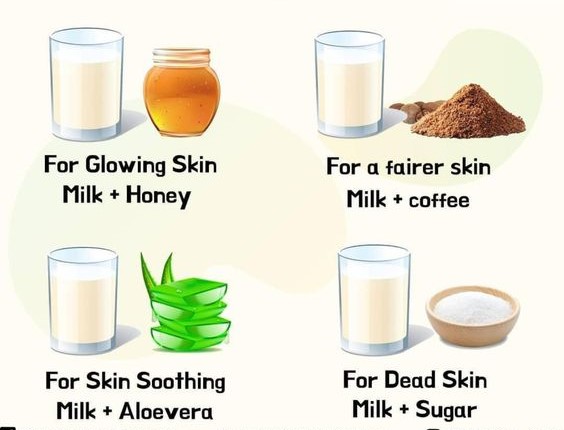In the realm of beauty trends, an unusual contender is making waves – raw milk.
Touted by skincare proponents as a secret to healthier skin, this unprocessed dairy product is raising eyebrows for its potential benefits. But is it all just hearsay, or does science support the raw milk skincare trend?
Let’s hear what the experts say as we read along.
Raw milk is the unadulterated milk that has not undergone pasteurization or homogenization, as straight from the source and might harbour various microorganisms, including potentially harmful ones.
And while it may be favoured for its flavour and perceived nutritional value, the decision to embrace raw milk comes with a cautionary note.
On raising awareness for the distribution and sales of raw milk, different countries and regions have distinct laws governing its regulations for both sellers and consumers while further research continues.
However, according to Mira Kapoor, a skincare expert who claimed it is tried and tested on DIY recipes for radiant skin, “raw milk works wonders for dry skin and hydrates and brightens the complexion.”
Come to think of it, dairy milk has lactic acid, and that helps to stimulate cell turnover and naturally buffs away dead skin cells. “It also mildly exfoliates the skin and moisturizes it too,” she had argued.
She said the concept of using raw milk for skincare revolves round the idea that its unaltered state preserves proteins, lipids, vitamins and minerals that can offer a plethora of advantages.
However, it is still vital to acknowledge that the claims supporting these benefits largely rely on anecdotal evidence depending on robust but yet to be affirmed scientific backing as it is with other natural remedies.
Also contributing, Dr. Soma Sarkar, a skincare personnel, pointed out that in the past, people used to bathe in raw milk and honey because it contains lactic acid, which acts as an excellent cleanser and helps to peel the superficial layer of the skin and offers deep hydration to the skin. It’s best for someone who has dry and sensitive skin as raw milk from soy and almond will do as they contain Vitamins A, D, E that help to cleanse, and moisturize the skin at the same time.
Speaking on whether raw milk go through a quality check before using it on your skin; Dr. Sarkar said applying raw milk directly to the skin is safe, but the source of the particular raw milk has to be known; adding that she has hardly seen any complications in patients using cow milk.
So, she gave a simple advice, know your skin type first. People who have abraded skin, acne-prone skin, or dermatitis skin should avoid applying raw milk directly to the skin, she noted.
But on a general parlance, the skincare professionals unanimously weigh in on some of the benefits attributed to raw milk, namely:
Moisturizing – due to raw milk’s natural facts such as triglycerides which serve as emollients, potentially softening and hydrating the skin.
Nutrient Content – raw milk is rich in vitamins and minerals, including Vitamin D, calcium, and B vitamins which some other proponents also believe can enhance overall skin health.
Lactic Acid Magic – raw milk’s lactic acid, an alpha hydroxy acid (AHA), is known for its exfoliating properties, which could improve skin texture and complexion.
Anti-inflammatory and Antimicrobial Properties – lactic acid, alongside other raw milk components, may offer mild anti-inflammatory and antimicrobial benefits, potentially aiding skin conditions like acne and redness.
Gentleness – for those with sensitive skin or allergies to synthetic ingredients, raw milk is considered a gentle and natural skincare option.
Kapoor and Sarkar however note that it is essential to acknowledge that while these potential benefits spark enthusiasm, scientific data backing these assertions are limited, cautioning that individual variations could lead to varying but non-harmful outcomes in terms of skin care for the fact that what works for one person might not work for another.
They also note that there are potential side effects as it is with any other forms of treatments that could be associated with raw milk in routine skin care.
It is therefore essential to use raw milk cautiously and follow stringent storage and hygienic practices to ensure sage usage before incorporating it into skincare routine, taking cautious note of;
Source of Raw Milk – individuals must choose raw mils from reputable and trustworthy sources to minimize risk of bacterial contamination.
Patch Test – Before applying raw milk to the face, first perform a patch test on a small skin area to check for allergies or adverse reactions.
Listen to Your Skin – discontinue raw milk use if you experience discomfort, redness or irritation to your skin.
Trust Tested Products – consider using skincare products from established brands with a history of efficacy and safety testing.
Consult Experts – seek guidance from dermatologists or skincare specialists, especially if you have pre-existing skin concerns or unique skincare needs.


